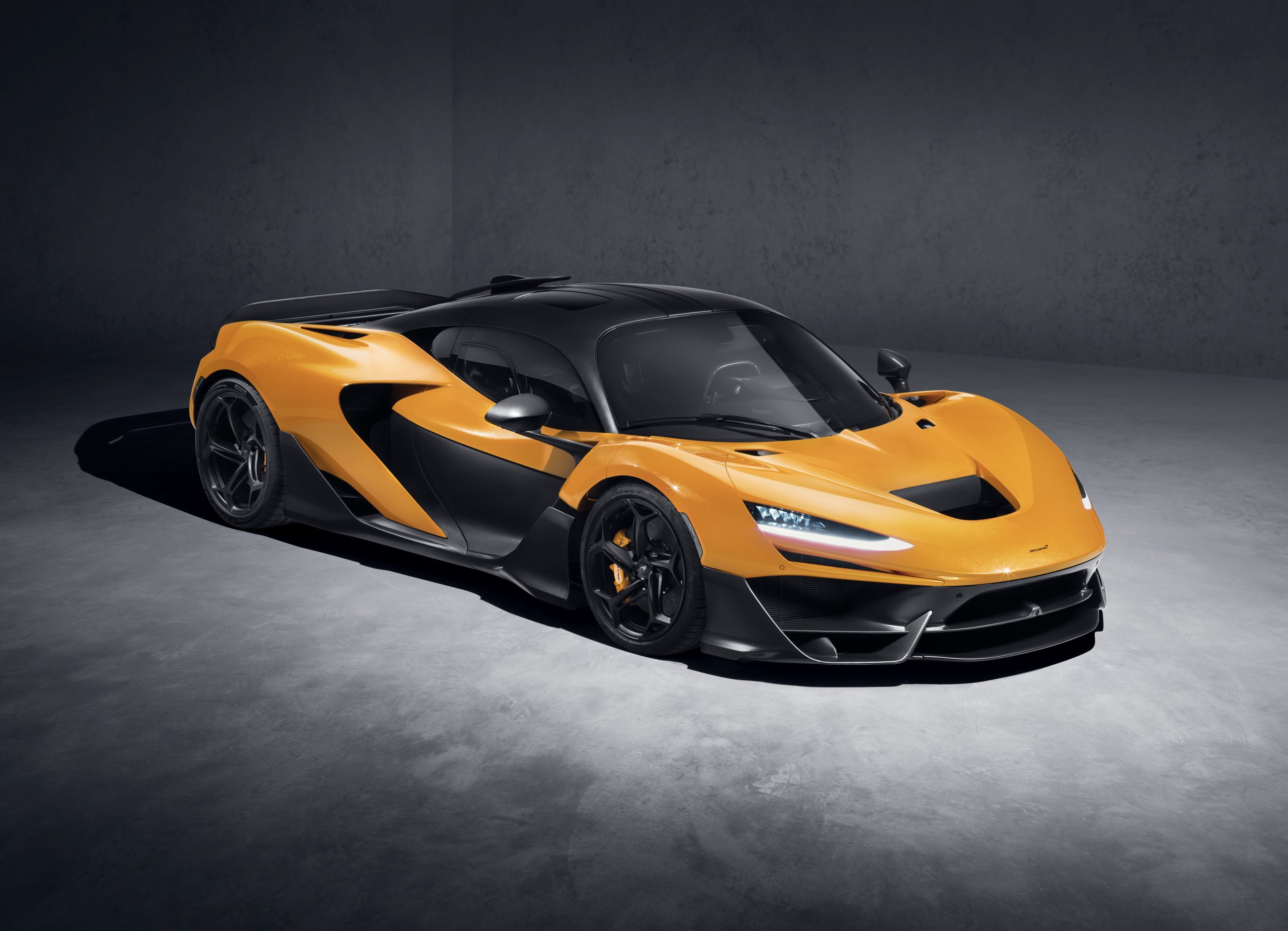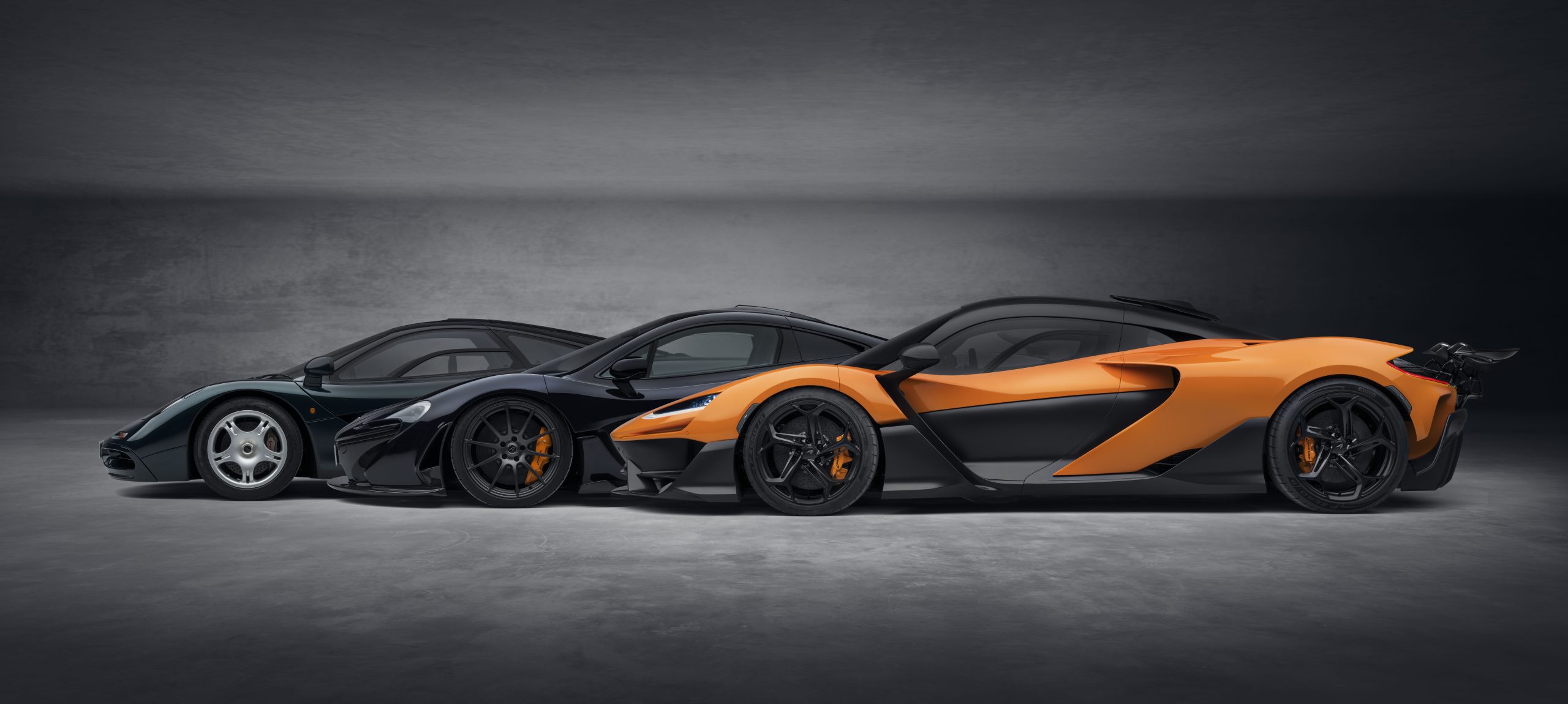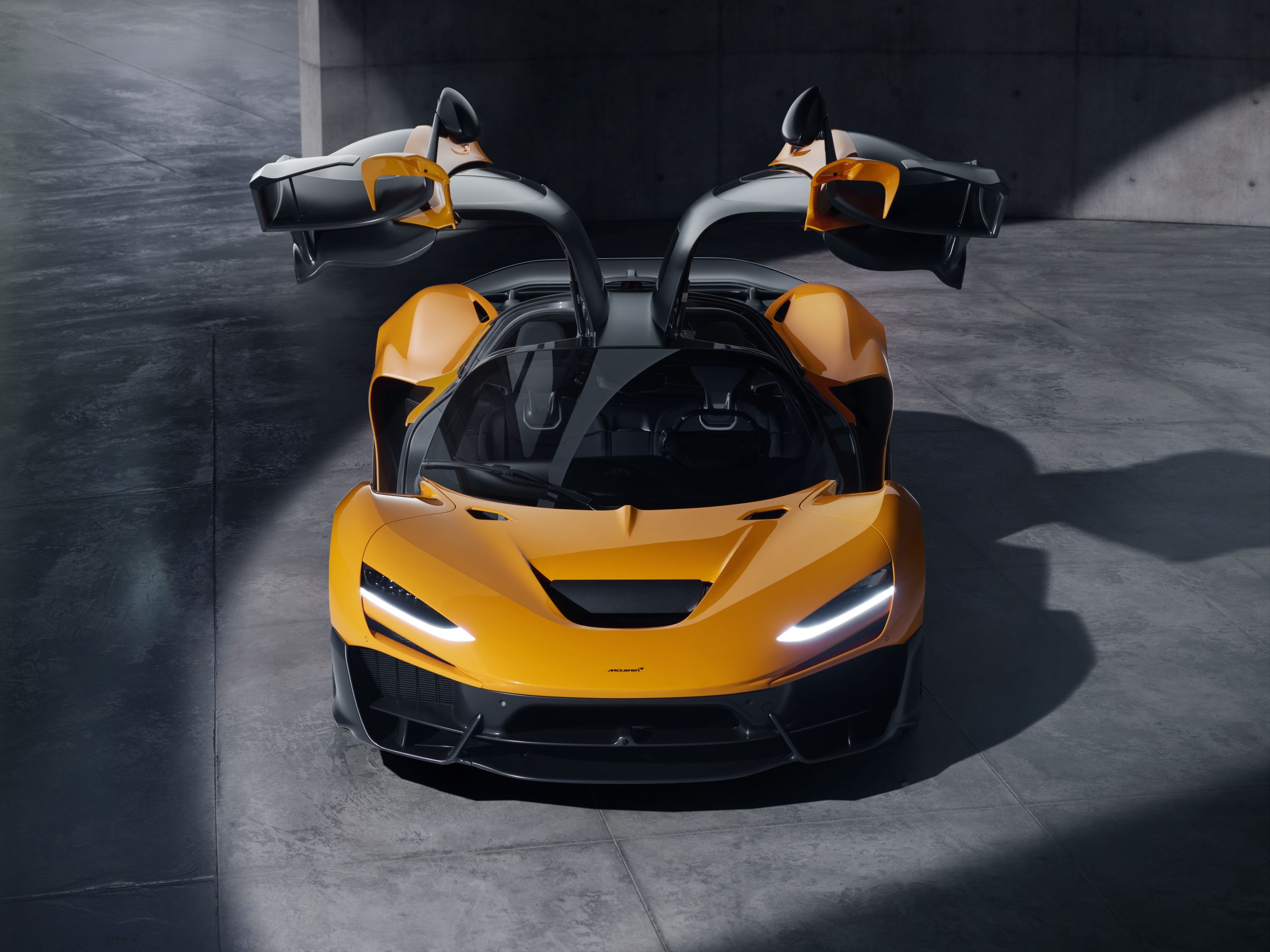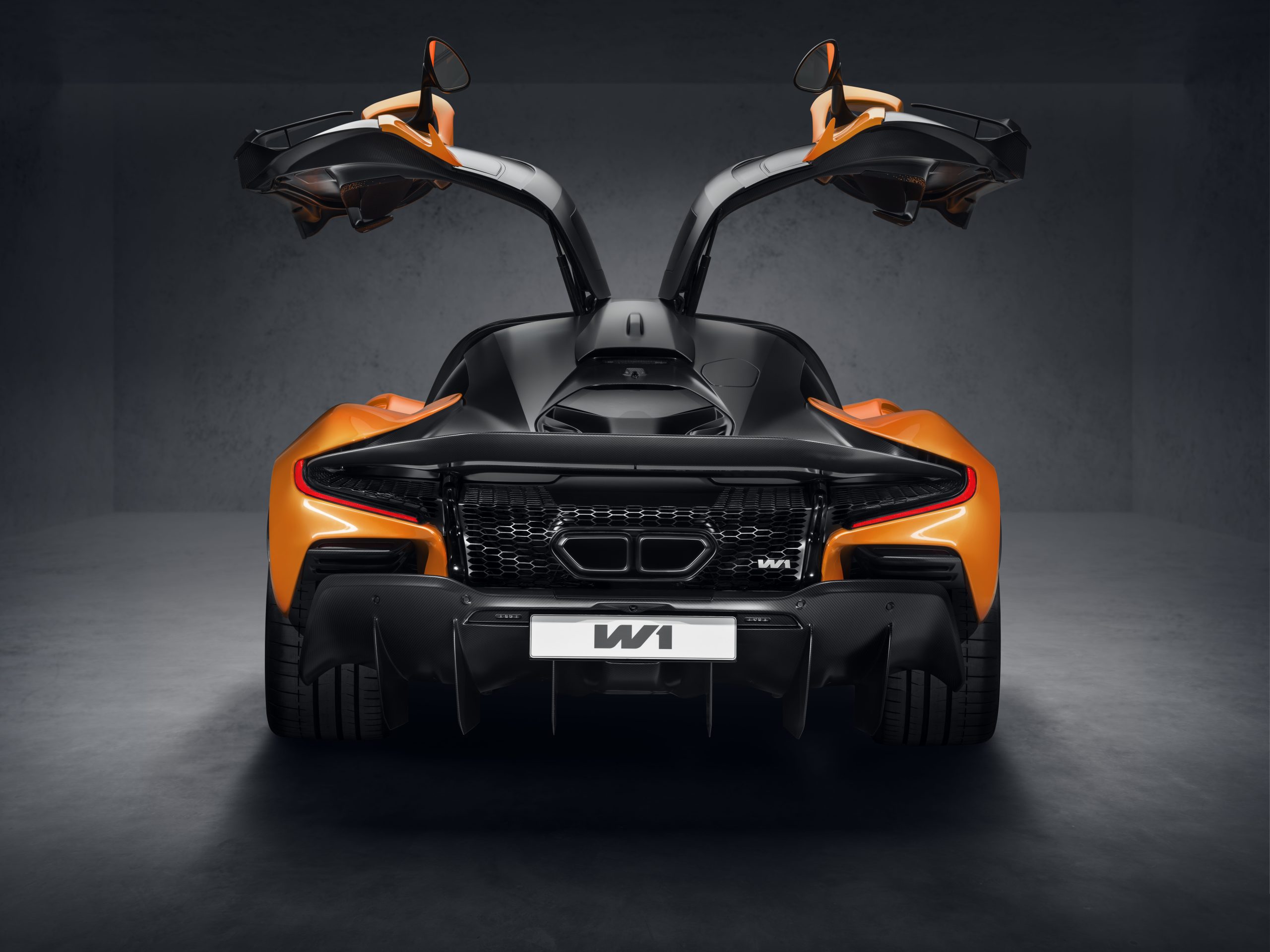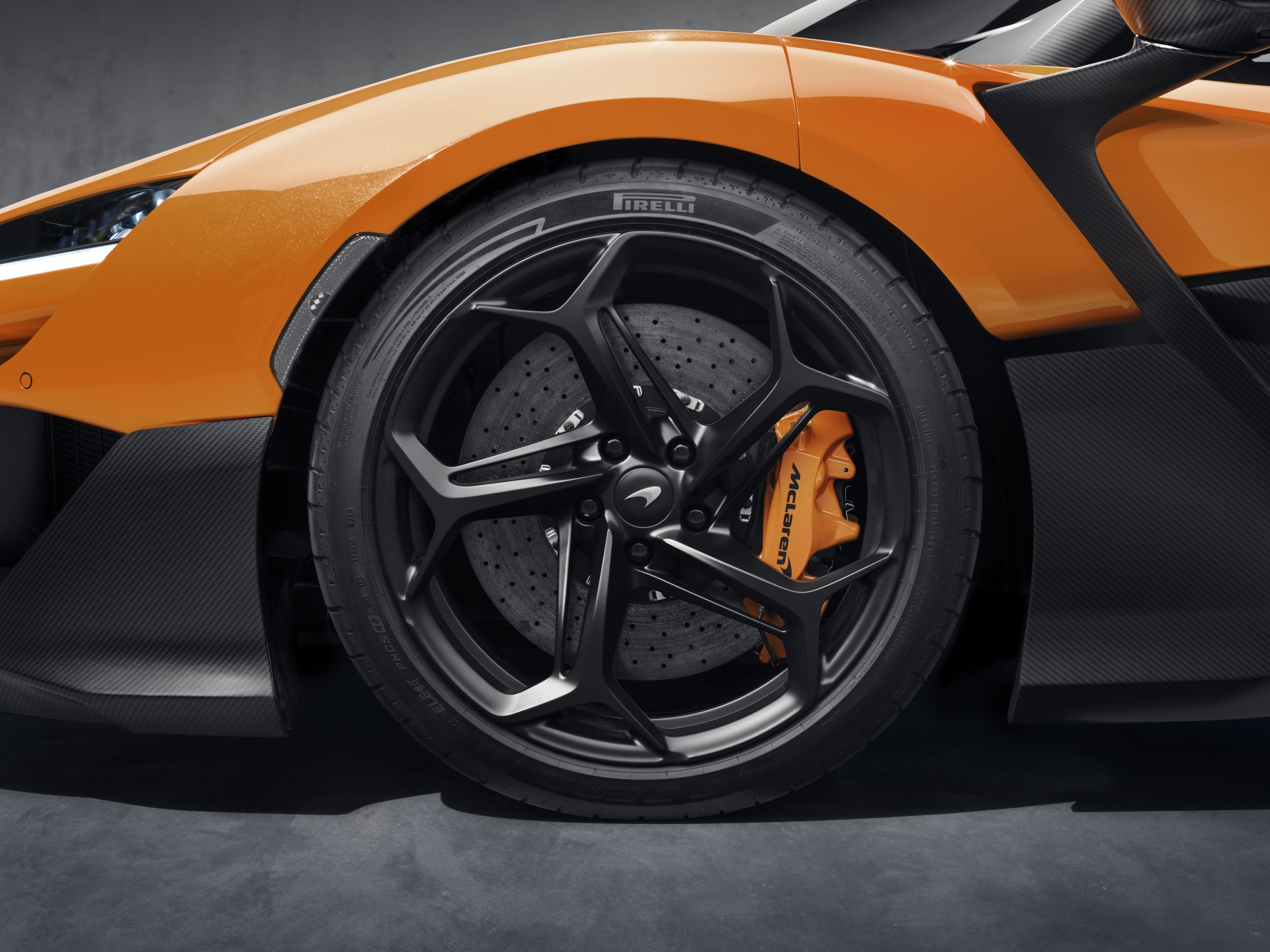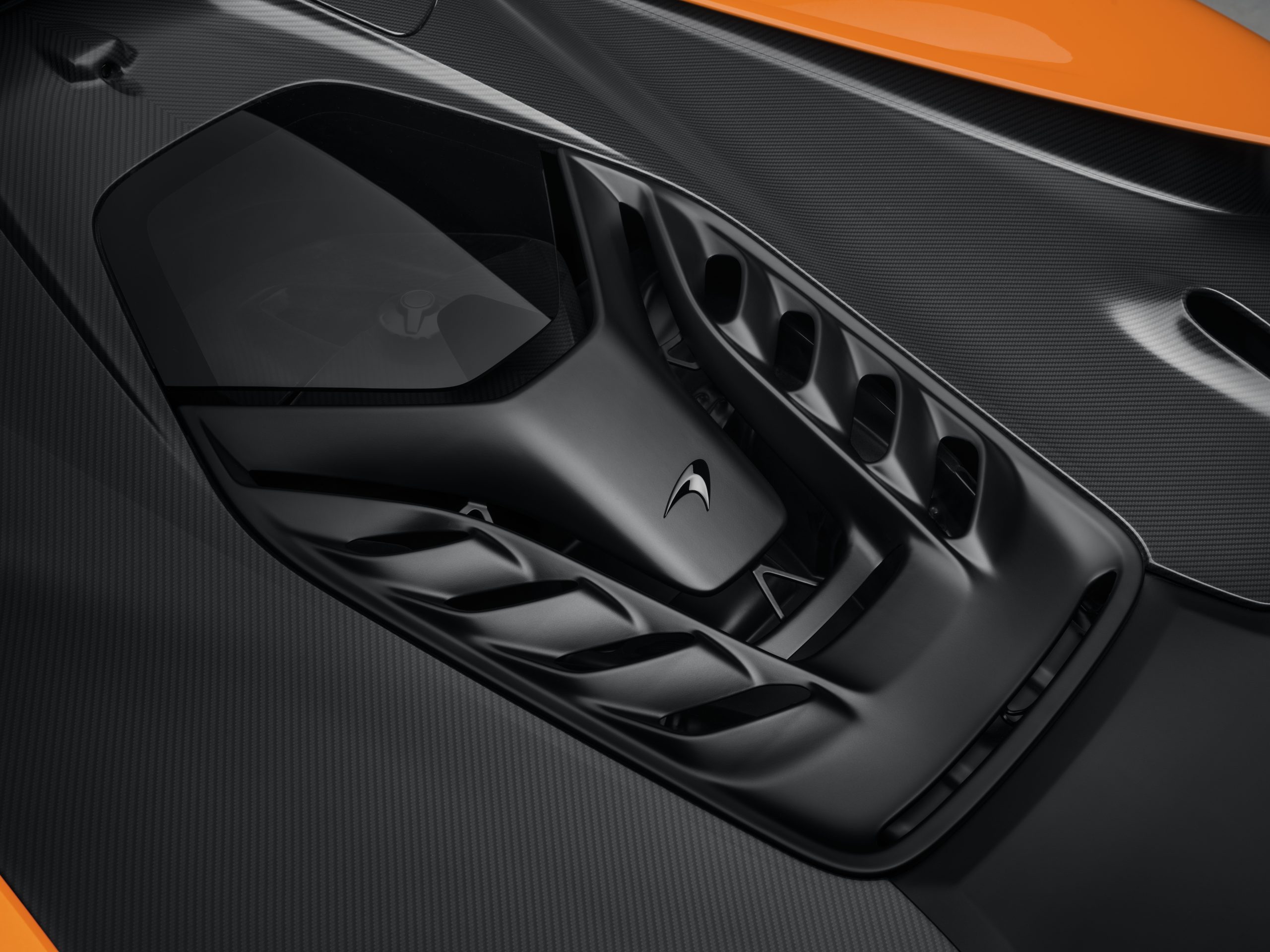McLaren has unveiled the successor to its F1 and P1 halo hypercars. The W1 gets its name from the company’s “World Championship mindset” and its spec is suitably earth-shattering.
Take the powertrain to start. There’s a new four-litre MHP-8 twin-turbo V8, with its block, cylinder heads and pistons all in aluminium. Its cylinder bores are plasma spray coated, allowing the engine to rev to 9,200rpm, there’s port fuel injection and a direct injection system that runs at 350 bar, plus a tubular exhaust tuned as much for sound as performance.

Its specific output of 230bhp per liter is the highest of any McLaren engine, allowing internal combustion to contribute 915bhp . Adding to that is a motorsport-derived E-module mounted to the side of the eight-speed transmission, which which adds a further 342bhp, yet only weighs 20kg. The Formula-E spec motor can spin to 24,000 rpm, and is powered by a compact 1.384 kWh battery.
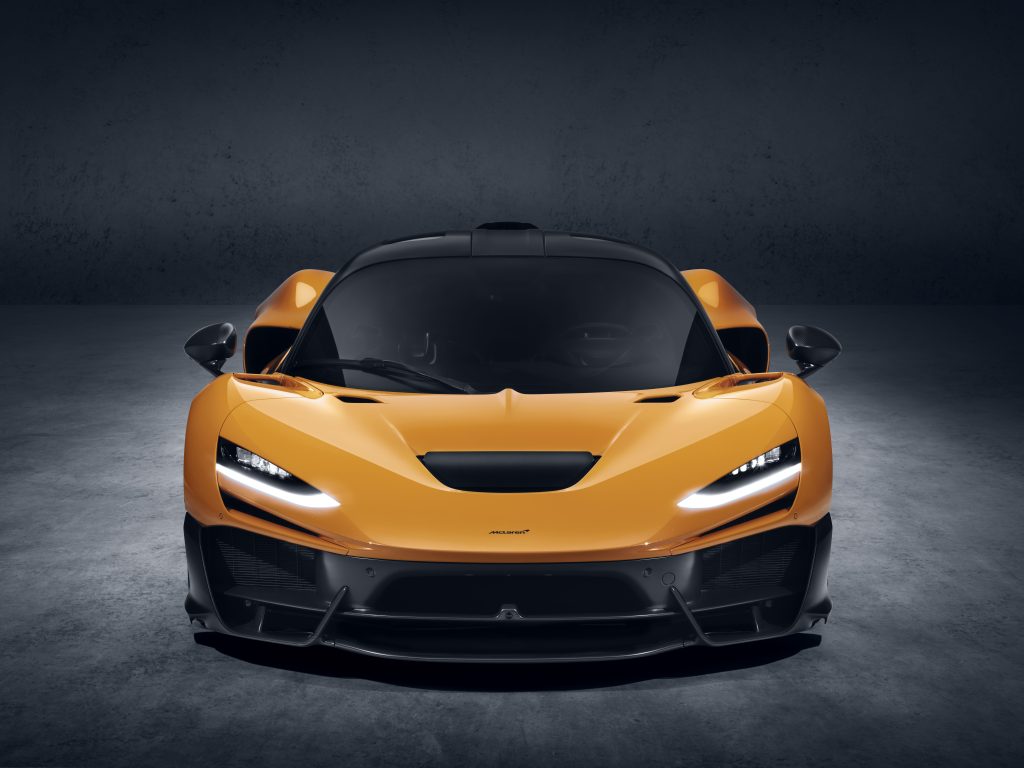
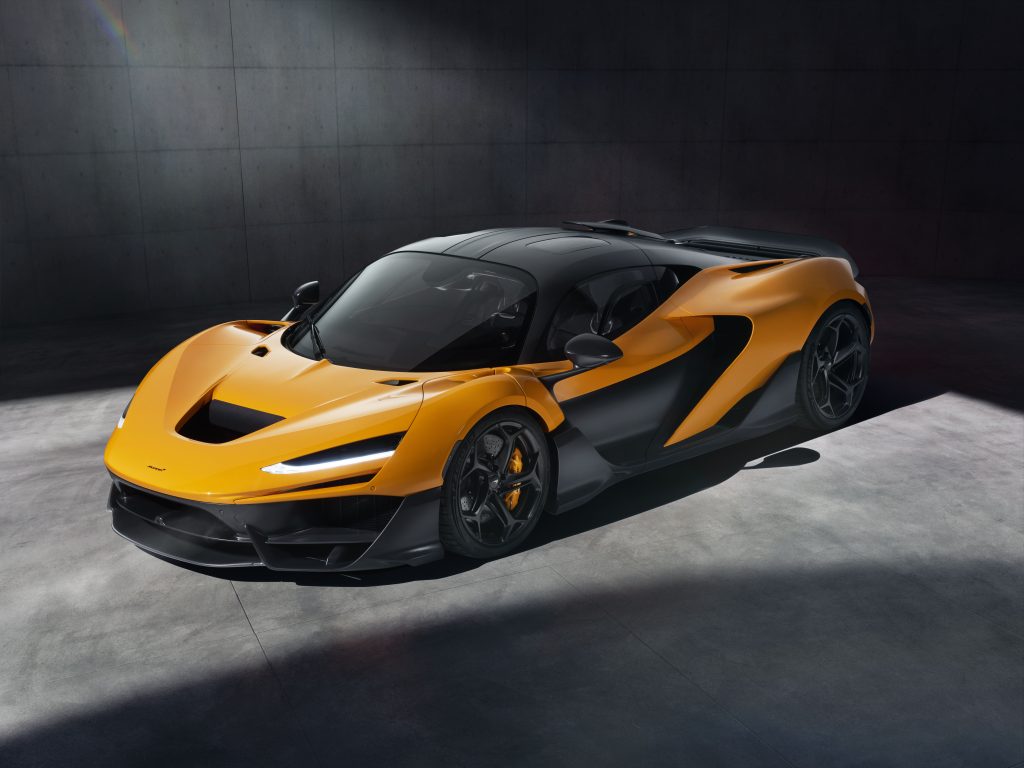
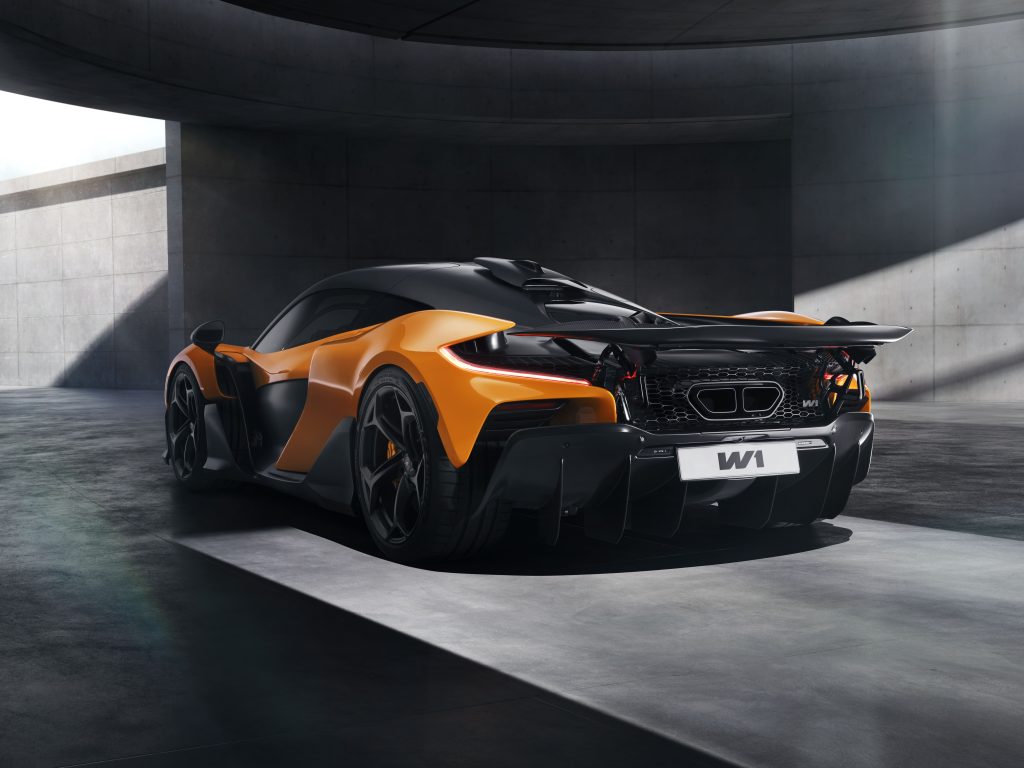
Although it can drive in pure electric mode, it will only go two miles in silence, with the hybrid system focused on delivering brutal acceleration instead. Hold on tight for some ridiculous numbers, because with all 1257bhp deployed the W1 can launch to 62mph in 2.7 seconds, hit 124mph in 5.8 seconds and 186mph in less than 12.7 seconds. Top speed is limited—yes limited—to 217mph. Hit the brakes and it will slow to a stop from 124mph in 99m and from 62mph in just 29m.
That level of performance is made possible, not just by the W1’s prodigious power, but also its minimal mass. Thanks to an all-carbon Aerocell the W1 weighs in at a shade under 1,400kg, which is almost identical to the P1, yet it delivers almost 400bhp more.
What’s not so different from the P1 is the styling. The W1 has that signature McLaren look, which on the one had means it has a clear brand identity, but on the other suggest closer inspection is needed to tell it apart from lesser cars. So, deerstalker hat on and magnifying glass in hand, let’s take a look.
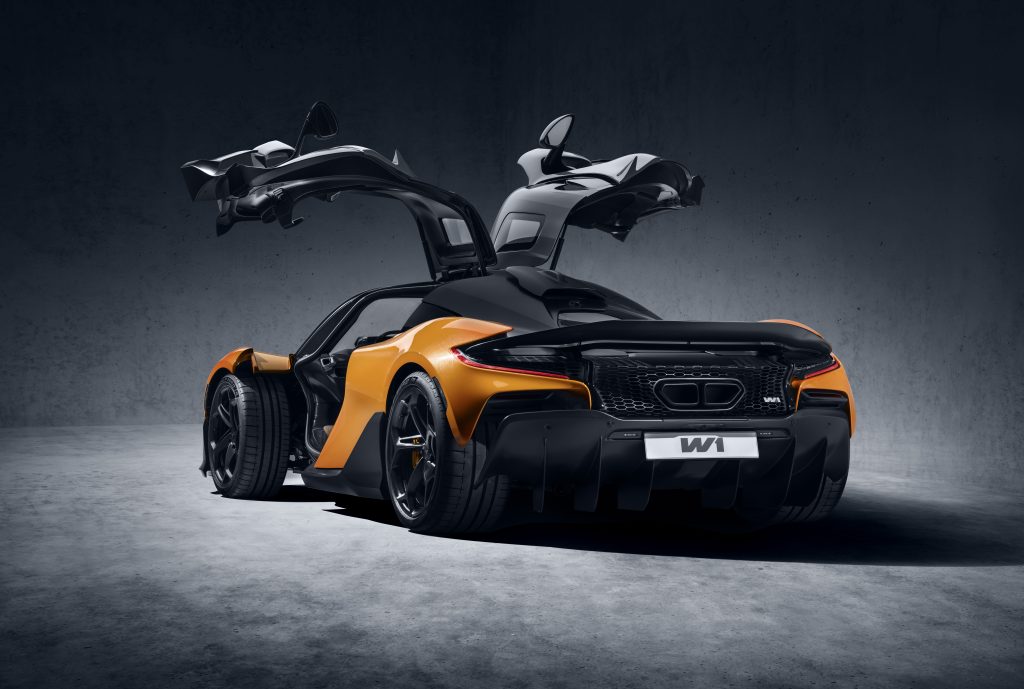
Reasonably obvious are the full gullwing doors and the deep air duct in the hood, with the W1’s most significant feature saved for the rear. It’s called the Active Long Tail and, at the touch of a button extends the rear wing out by an additional 300mm. When combined with the car’s F1-style ground-effect aero design it helps to provide up to 1,000kg of downforce, yet can also be flipped into a low-drag setup with a DRS button in the cabin.
The W1 can perform a “radical” road to track transformation by dropping its ride height by 37mm at the front and 17mm at the rear, and offers two race modes: GP and Sprint. GP is engineered for consistent pace over a longer distance with Sprint draining the battery for the ultimate hot lap.
The various drive modes are selected from the squared-off steering wheel, which moves, along with the pedals to fit the driver because the seats are actually integrated into the monocoque.

For optimum driver engagement McLaren has eschewed drive-by-wire for steering and brakes, maintaining hydraulic systems instead. Suspension is by the way of F1-style titanium torsion bars at the front and a z-bar at the rear, with both featuring an active heave system, and braking is by carbon ceramic discs.
All this contributes to making the W1 the fastest ever McLaren road car, but it also outpaces the track-oriented Senna, lapping the Nardo test course some three seconds faster. The Senna does, however, outrun the W1 in one area – 500 of those were built, whereas McLaren will only assemble 399 examples of the W1. They’re priced from around £2 million each and all have already been allocated.
The W1’s launch timing is spot on with McLaren leading the Formula 1 World Championship for the first time in a decade. If the season ends with the British team on top then the W1 really will live up to its name.
